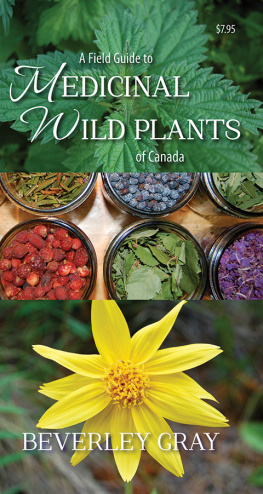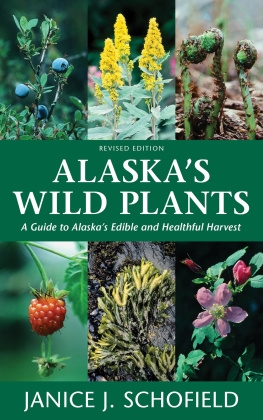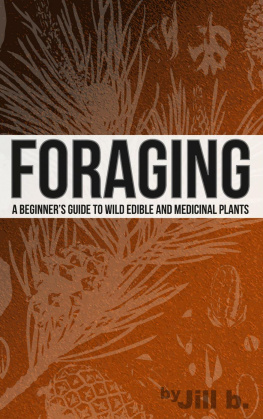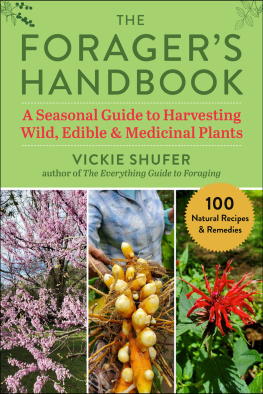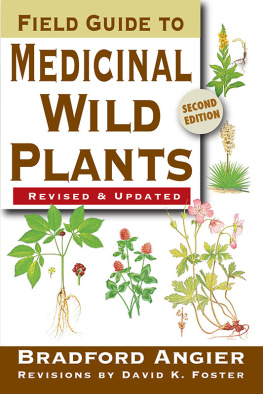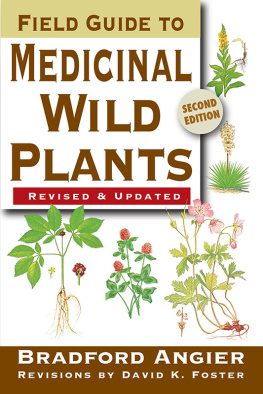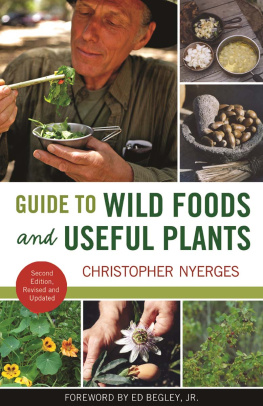Wildharvestingalso known as wildcrafting, gathering, or foraging for plantsis the practice of respectfully harvesting and gathering plants that grow wild for food and medicinal purposes.
Safety First
Plants have distinct effects on different people. It is vital that you consult your health care provider before considering any self-directed treatment of a medical condition, including the use of wild food and medicine plants. Be vigilant when consuming wild plants: if you notice any negative effects, discontinue use and consult your health care provider immediately.
Some beneficial plants closely resemble other plants that are toxic to humans. Before you consume any wild plant, consult with an expert to be certain that you have correctly identified it.
Wild Harvesting Tips
- Gather in unpolluted areas
- Make noise to alert bears and other animals of your presence
- Harvest only where there is a large and healthy community of plants
- Do not over-harvest
Harvest Times
When harvesting plants, its important to gather at the correct point to ensure that you will have the best quality herbs.
Herb refers to the whole plant, including leaves, flowers, stems, seeds and, sometimes, roots. The whole herb can be harvested while the plant is in flower. If the flower is not going to be used, then the herb can be gathered before the flowers emerge, but after the leaves have appeared.
Flowers are gathered in the pubescent stage when their colour, aroma and volatile oils are at their most potent or when they are wide open and at their peak.
Roots can be gathered in the spring before leaves start to develop and before the plant goes into flower, or in the autumn after flowering is finished and leaves have died back. Be sure to leave plenty of rootstock so that plants can continue to flourish.
Fruits and seeds are gathered when ripe.
Preserving Plants
Drying plants helps preserve their vitality for future use in teas, tinctures, syrups, salves, creams and as spices. Dry out of direct sunlight, in a well-ventilated area, with low light and low heat. Methods include racks, baskets, paper bags, dehydrators and hanging in loose bundles. After drying, transfer to storage jars and label clearly. Store in a dark, cool, dry arealight, heat, moisture and exposure to air will deteriorate dried plants and decrease their shelf life.

Arnica
Arnica cordifolia, A. angustifolia
Asteraceae family perennial, slender rhizome, erect stem stands 1050 cm high. Leaves opposite, simple, entire or toothed. Yellow flowers with ray petals, circular cup of bracts at base.
Habitat: Moist mountainous areas, shade, among poplars, aspens and conifers.
Harvest: Pinch flower head off stem when in full flower; allow to wilt for a few hours so excess moisture evaporates; infuse in oil immediately because the flowers will turn to a white seed fluff as they begin to dry.
Medicinal Uses: Topically as salve, cream, oil or poultice to improve circulation to injured area, promotes healing of bruises, sprains, strains, muscular inflammation, aches, pains, rheumatic joint pain and swelling due to fractures.
Cautions: Not for use on bleeding skin or for internal use unless in a homeopathic remedy.

B ASIC OIL-INFUSION RECIPE
Make sure your equipment is clean and dry. If using fresh herbs, wilt them for a day before infusing.
Combine 1 cup (250 mL) fresh or cup (125 mL) dried herbs in a blender with 2 cups (500 mL) olive oil or carrier oil of your choice. Pour into a jar, covered with a cheesecloth if using fresh herbs, or a lid if using dry herbs. Shake or stir daily.
After 2 to 4 weeks, strain the oil through a few layers of cheesecloth and add tsp (1 mL) vitamin-E oil as a preservative. Pour oil into a dark glass bottle. Label and store in a cool place out of direct sunlight .

Bearberry
Arctostaphylos uva-ursi
Ericaceae family perennial, wiry prostrate evergreen shrub, forms large mats that hug the earth. Flower clusters of tiny pinkish-white bells with 10 stamens. Fruit dull red, mealy inside, contains one hard-walled seed with pithy texture.
Habitat: Sunny, sandy soil, dry slopes, rocky areas, gravel, riverbanks, peat, coniferous forests, tundra.
Harvest: Leaves in spring through autumn.
Medicinal Uses: Leaves tinctured or tea as antiseptic for urinary tract infections, including cystitis, urethritis, prostatitis, diarrhea and as a mouthwash for infections.
Food Uses: Berry bland but edible; high in vitamin C and carbohydrates.
Cautions: Avoid large doses in pregnancy. Not to be taken for longer than two weeks.

Bedstraw
Galium species
Rubiaceae family annual with green whorled leaves on squarish stems. Fragrant flowers in branched cyme clusters; petals are pure white to yellow and hairy. Nutlets come in pairs, 2 mm in length.
Habitat: Along riverbanks, dry, open or gravelly places.
Harvest: Flowering plant, seeds, leaves as they appear.
Medicinal Uses: Tea or tincture, lymphatic tonic, diuretic, blood cleanser, urinary inflammations including cystitis. Leaves and flowers can be used as compress to stop bleeding, soothe sore muscles and for eczema.
Food Uses: Young plants fried in oil, eaten alone or added to salads. Seeds dried, roasted and ground for a coffee substitute. Whole chopped plant can be used like rennet to curdle milk for cheese making.
Cautions: Continual use can irritate the mouth. Avoid with poor circulation and diabetes.

HOW TO PREPARE A WILD PLANT TEA
A fresh or dried-leaf infusion is the best method to prepare herbal tea. Break up the leaves, flowers and stems into small pieces (this releases the aromatic oils) and add a pinch per cup. Pour the boiling water over the leaves, cover so as not to release the volatile oils, and infuse for five to ten minutes. You can sweeten it up with a wee dollop of honey and enjoy!

Wild Chamomile
Matricaria discoidea
Asteraceae family annual with many-branched leafy stems, 1030 cm or higher. Leaves highly dissected, fern-like. Flowering heads are yellowy green, numerous, conical, in a cup of bracts; ray flowers absent.
Habitat: Disturbed soils.
Harvest: Leaves and flowers in summer.
Medicinal Uses: Tea for gas, diarrhea, heartburn, sleep, menstrual cramping and colds. Topically for wounds and achy, sore muscles.
Food Uses: Flowers can be made into a tea infusion, eaten raw or added to salads, smoothies, cakes and muffins. Contains vitamins A, C and minerals such as calcium, magnesium and potassium.

Chickweed
Stellaria media
Caryophyllaceae family annual. Trailing ground cover reaches lengths of 1060 cm. Lower leaves broad, long sparsely hairy petioles; upper leaves smaller and lack petioles. Tiny, dainty five-petal white flowers are sparsely scattered along the plant and are deeply cleft; petals shorter than green hairy sepals. Tiny seeds are reddish brown.
Next page
